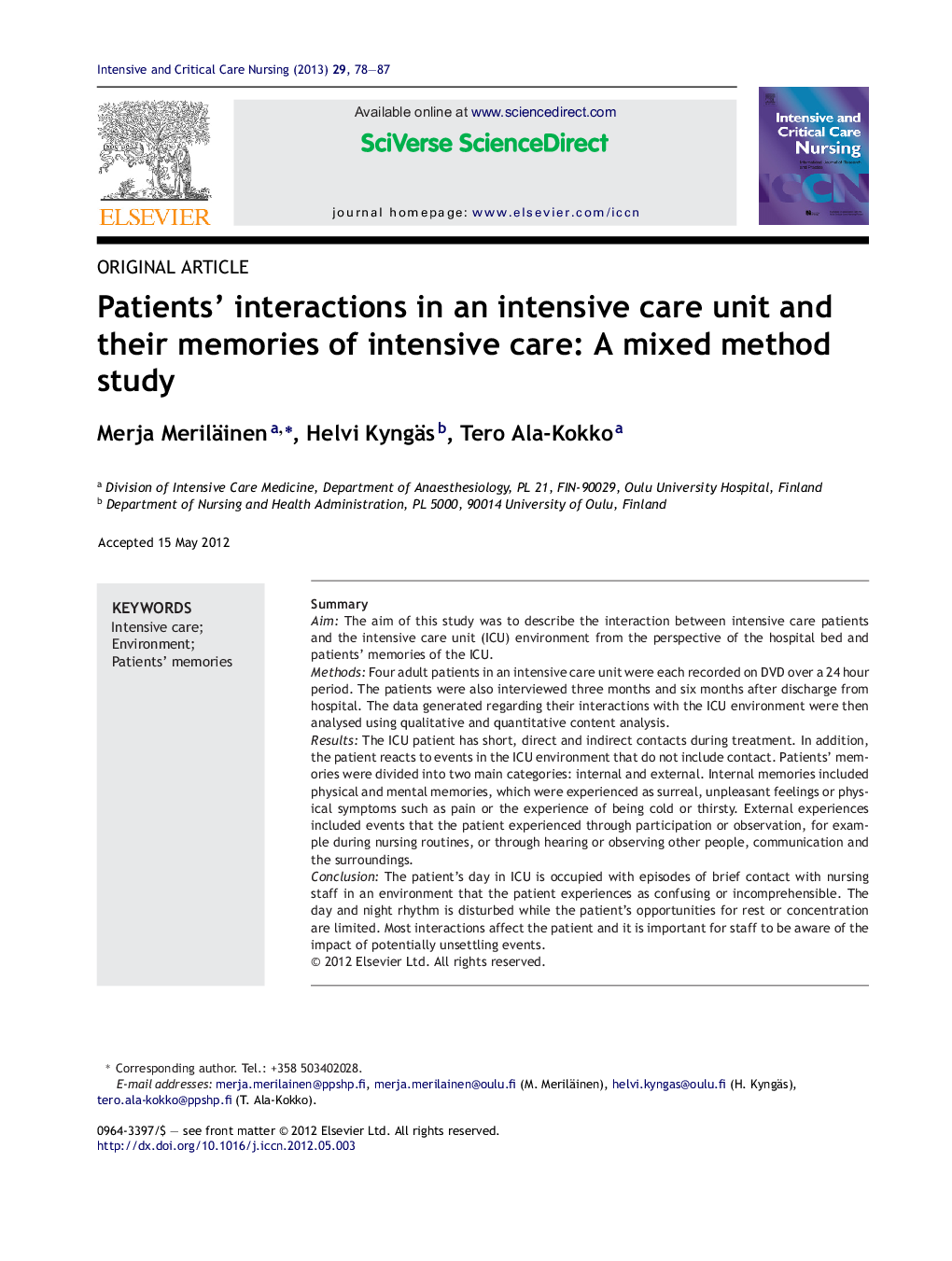| Article ID | Journal | Published Year | Pages | File Type |
|---|---|---|---|---|
| 2652181 | Intensive and Critical Care Nursing | 2013 | 10 Pages |
SummaryAimThe aim of this study was to describe the interaction between intensive care patients and the intensive care unit (ICU) environment from the perspective of the hospital bed and patients’ memories of the ICU.MethodsFour adult patients in an intensive care unit were each recorded on DVD over a 24 hour period. The patients were also interviewed three months and six months after discharge from hospital. The data generated regarding their interactions with the ICU environment were then analysed using qualitative and quantitative content analysis.ResultsThe ICU patient has short, direct and indirect contacts during treatment. In addition, the patient reacts to events in the ICU environment that do not include contact. Patients’ memories were divided into two main categories: internal and external. Internal memories included physical and mental memories, which were experienced as surreal, unpleasant feelings or physical symptoms such as pain or the experience of being cold or thirsty. External experiences included events that the patient experienced through participation or observation, for example during nursing routines, or through hearing or observing other people, communication and the surroundings.ConclusionThe patient's day in ICU is occupied with episodes of brief contact with nursing staff in an environment that the patient experiences as confusing or incomprehensible. The day and night rhythm is disturbed while the patient's opportunities for rest or concentration are limited. Most interactions affect the patient and it is important for staff to be aware of the impact of potentially unsettling events.
